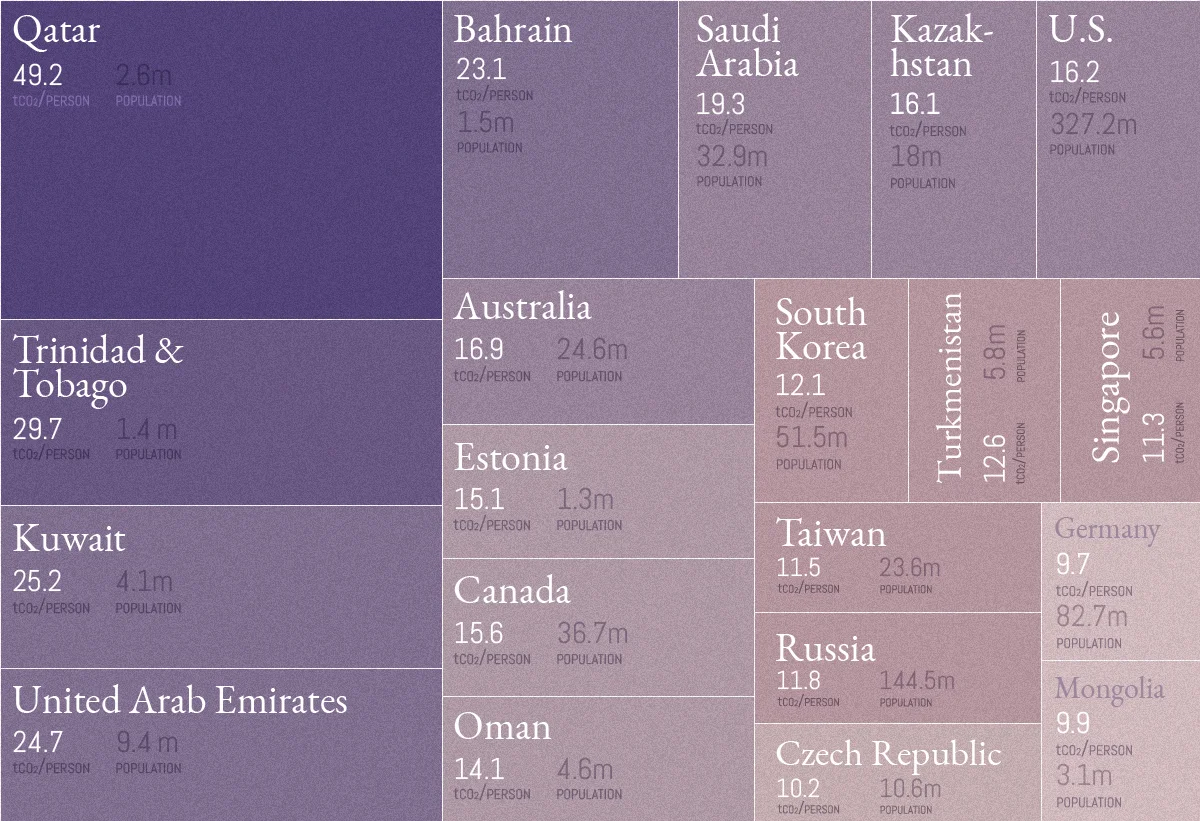Carbon emissions, primarily in the form of carbon dioxide (CO2), are a central component of global greenhouse gas emissions, contributing significantly to climate change. These emissions originate from various human activities and natural processes. The burning of fossil fuels, such as coal, oil, and natural gas for energy production, is one of the primary sources of anthropogenic (human-caused) carbon emissions. These emissions occur in various sectors, including electricity and heat production, transportation, industry, and residential and commercial buildings.
The process of deforestation and land-use changes also releases significant amounts of carbon into the atmosphere. When forests are cleared or burned, the carbon stored in trees and vegetation is released as CO2. Agricultural practices, including livestock production and rice cultivation, contribute to carbon emissions as well.
According to visualisation created by visualcapitalist.com, China, the United States, and India account for roughly half of all global emissions in 2017.
What percentage of global fossil fuel emissions (since 1751) have occurred in my lifetime?
- If you're 15 years old, you've seen more than 30%
- If you're 30 years old, you've seen more than 50%
- If you're 85 years old, you've seen more than 90%
The dramatic shortening between the time periods taken for 400 billion tonnes of carbon dioxide to enter the atmosphere:
1st period: 217 years (1751 - 1967)
2nd period: 23 years (1968 - 1990)
3rd period: 16 years (1991 - 2006)
4th period: 11 years (2007 - 2018)
Where most of the world’s CO2 emissions come from (MtCO2)
1. China - 9,839 (27.2%)
2. United States - 5,269 (14.6%)
3. India - 2,467 (6.8%)
4. Russia - 1,693 (4.7%)
5. Japan - 1,205 (3.3%)
6. Germany - 799 (2.2%)
7. Iran - 672 (1.9%)
8. Saudi Arabia - 635 (1.8%)
9. South Korea - 616 (1.7%)
10. Canada - 573 (1.6%)
11. Mexico - 490 (1.4%)
12. Indonesia - 487 (1.3%)
13. Brazil - 476 (1.3%)
14. South Africa - 456 (1.3%)
15. Turkey - 448 (1.2%)
+ Rest of World - 10,028 (27.7%)
The top 20 countries with the highest emissions per capita
Beyond human activities, natural processes like volcanic eruptions and wildfires release carbon dioxide into the atmosphere, although their contributions are relatively smaller compared to human-caused emissions.
The increase in atmospheric carbon dioxide levels over the last century is a major driver of global warming and climate change. This rise in CO2 concentrations traps heat in the Earth's atmosphere, leading to higher global temperatures, altered weather patterns, and various environmental impacts.
To mitigate the adverse effects of carbon emissions, international efforts like the Paris Agreement seek to limit global warming by reducing emissions, transitioning to cleaner energy sources, and implementing sustainable land-use practices. Numerous countries have set targets for reducing their carbon emissions to combat climate change and limit the associated risks to the planet and its ecosystems.


This post may contain affiliate links. As an Amazon Associate, I earn from qualifying purchases.